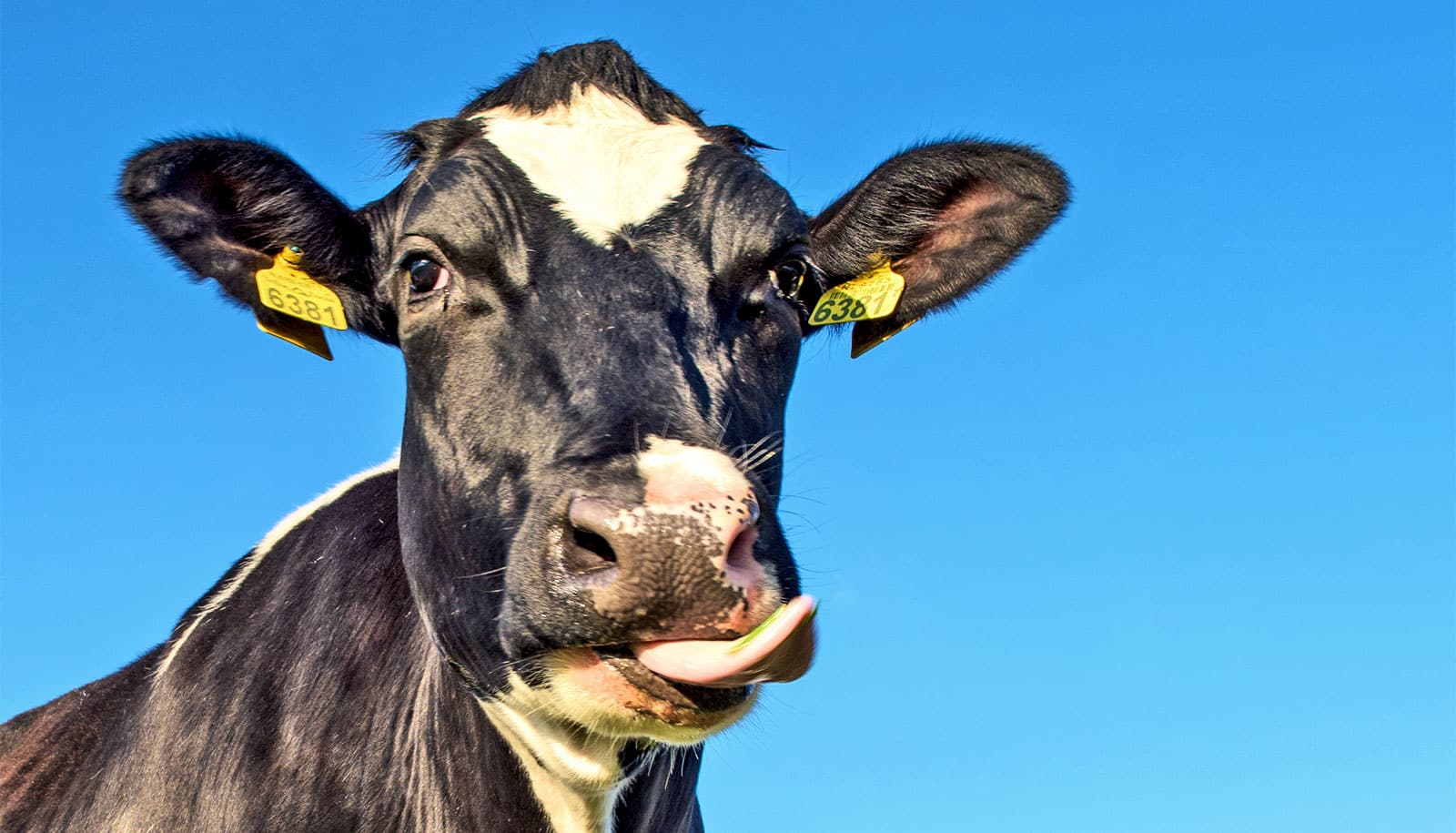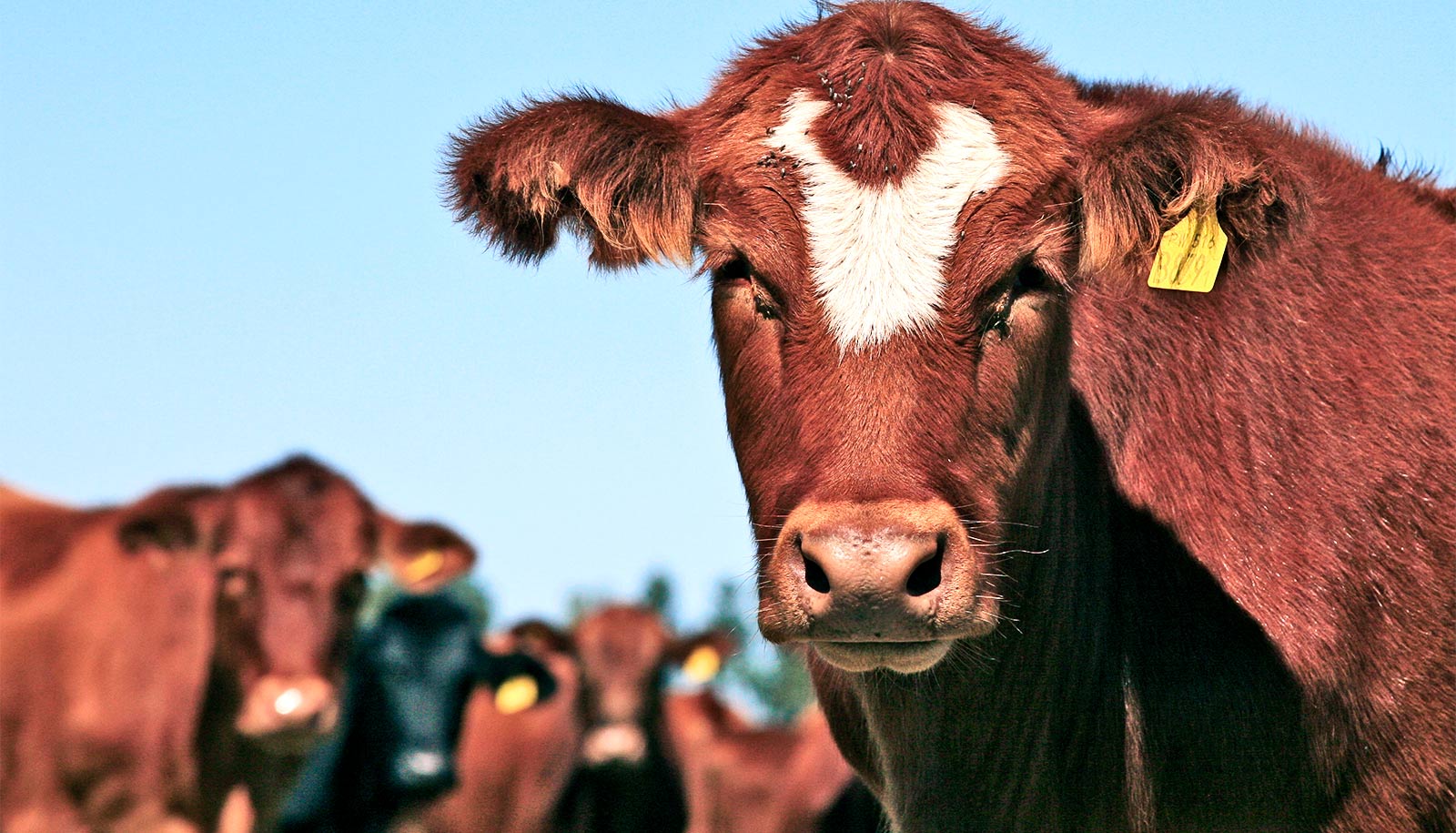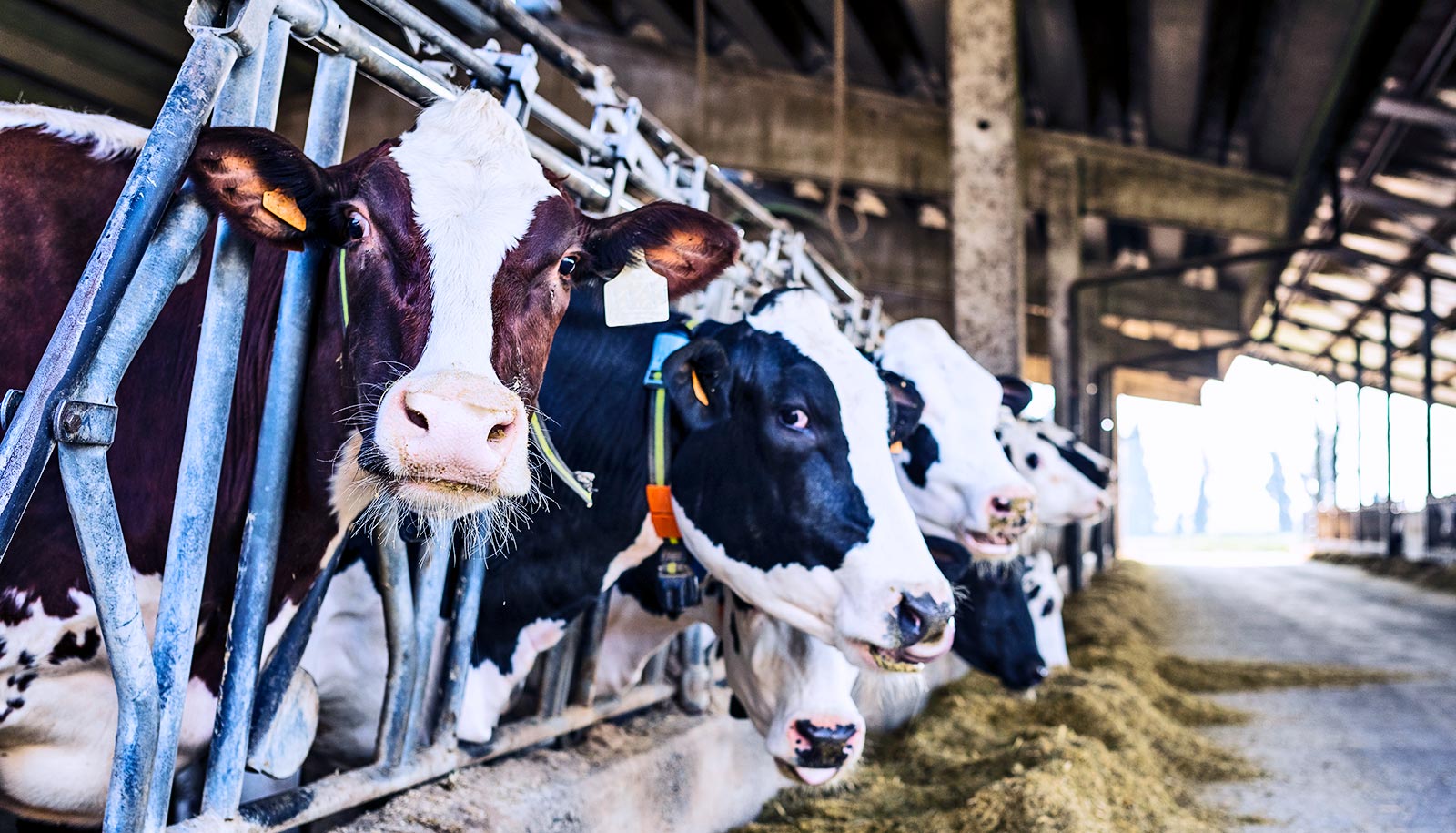Researchers have developed a test to score each DNA mutation in cattle, making it possible to select likely causal genetic markers based on their biological functions.
The study looks at cattle from different countries and breeds and aims to help farmers with selective breeding. The research can also apply to humans and help our understanding of DNA mutations and their biological functions.
Previously, several mutations in the cattle growth hormone receptor gene (GHR) were found to increase milk production. As the sequence of these mutations are almost identical, it is difficult to tell which one(s) are causal. Now researchers have found that one of them lies within a genomic spot important for evolution in 100 vertebrae species. This helps researchers to locate the causal mutation within the GHR gene.
This and other identified informative mutations are better markers to help breed healthier and more productive cattle. This scoring method can also help find informative and/or causal DNA mutations in humans and markers of human disease.
Many DNA mutations exist in animals and humans, with some of these ones causing phenotypic variations, or the individual expression and appearance of those genes.
“Finding these causal mutations are critical to breeding animals and in treating patients,” says lead author Ruidong Xiang of the University of Melbourne.
Cattle provided a good test case due to their population of 1.46 billion, with millions genotyped or sequenced as well as phenotyped. Cattle have been domesticated from two subspecies of the humpless taurine and humped zebu, which diverged up to 0.5 million years ago from the now extinct wild aurochs. The increasing amount of genomic data available makes cattle a reliable comparative model to test genome-wide association studies.
By looking at the DNA mutations change molecules in cells and tissues, and how these shape evolution, the authors demonstrated a new way to score millions of DNA mutations. They call this the Functional-And-Evolutionary Trait Heritability or FAETH score.
“Finding the ‘right’ genes helps the breeding industry to improve the accuracy of genomic prediction, a technique that predicts future phenotype using DNA information,” says senior coauthor Mike Goddard, a joint appointee at the University of Melbourne and Agriculture Victoria. “This will help farmers accurately select elite animals thus accelerate the annual genetic gain.”
“Many mutations ranked top in this scoring system are important for many phenotypes of cattle from different countries. This means that they can be used to advance selective breeding,” says Xiang.
The research will help improve the efficiency and accuracy of the global cattle breeding and in improving the methods for finding important mutations in mammalian species.
The next phase of the research will be in applying the methods to other species of animal and in using the method on larger sample sizes.
The research appears in Proceedings of the National Academy of Sciences. Additional researchers from from the University of Melbourne, Agriculture Victoria, La Trobe University, the University of Queensland, and Aarhus University in Denmark contributed to the work.
The researchers conducted the work with support from industry partners including DairyBio initiative; Agriculture Victoria; DataGene; and farmer cooperative CRV.
Source: University of Melbourne



